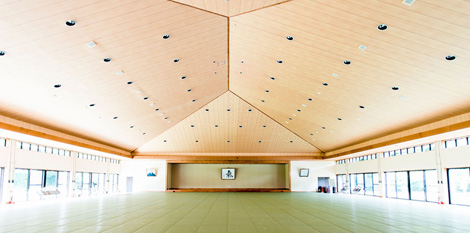I started taking piano lessons when I was 7 years old and went to my teacher’s house every week for about 10 years until I turned to 18.
I remember telling my parents I wanted to try the piano and asked for the lessons myself, but I don’t remember at all now as to why I was interested in piano or the motive for learning to play it.
My piano teacher played with an orchestra, and was studying “Ki” from Koichi Tohei Sensei at the time.
Apparently, many children from well-established families came to my teacher’s house for lessons. While other children greeted the teacher at the end of the lessons with “Gokigenyo, Sensei” (“Good day to you” – a very high-class way of saying “goodbye”), I remember that I was the only one who said “Sayonara, Sensei” (Goodbye – a very common way to say “goodbye”).
I was a delinquent student, so I caused a lot of trouble for my teacher. However, what the teacher taught me during those impressionable years is something that I am still using today.
Whenever the school got out late, and I had to rush to my teacher’s house thinking I would be late for the lesson, my teacher didn’t let me to touch the piano while I was in that state. I was not allowed to play the piano until my mind calmed down.
On one occasion, my mind probably didn’t calm down during the lesson time, and I was sent home without touching the piano.
When I was told that my mind was distracted, I had no idea what it meant at first. With some repetitions, however, I gradually began to understand through my body what it is like “for the mind to calm down”.
The tone of the piano clearly changes depending on one’s state of mind. In addition, when the mind is disturbed, the player cannot hear his or her own sound, making it impossible for the player to understand the movement of Ki and the performance becomes self-satisfied.
This is completely consistent with the training of Shinshin Toitsu Aikido.
Because our mind is calm and quiet, we can understand the movement of Ki. Because we understand the movement of Ki, we can respect it and lead our partner into a throw. If our mind is not calm, our technique becomes self-satisfied.
Calming our mind before starting anything, whether it is piano or Aikido, is an extremely important practice to fully understand and demonstrate the power we naturally have. I actually learned this through my piano lessons.
I also learned that the end of one sound is the beginning of the next sound.
Even when there is silence, it does not mean the music is interrupted. The periods of no sound are also part of the music. This means that just because there are no notes, our Ki should not be cut off there.
I learned the sense of so-called “Ma” (pause) from my piano lessons.
I had a habit of cutting my Ki at the end of a note. Through the sound, my teacher repeatedly pointed out to me my “Ki was cut off”, but at first, I could not understand at all what that meant.
However, as I was repeatedly reminded the moment my Ki is cut off, I gradually came to understand through my body what “Ki is cut off/stuck” feels like. As the result, I was able to understand not to cut/stop my ki.
Not only music, but in speeches, and of course, in Aikido techniques, there is an appropriate “ma”, or pause, that is created based on the connection with our surroundings. If our Ki is cut off, we won’t know the appropriate “ma”.
In Shinshin Toitsu Aikido, the end of one movement is the beginning of the next movement, and the end of one technique is the beginning of the next technique. There is never a moment when our Ki is cut off. Not only the moment when we are moving, but also the moment we are not moving is important.
In this way, my understanding of Shinshin Toitsu Aikido deepened by studying Ki from a different angle, which was learning to play the piano.
Studying Ki is the foundation of everything, and the important things are all intrinsically connected. By applying what you have learned in Shinshin Toitsu Aikido in other fields, you can gain a deeper understanding.
This does not mean to “mix different things”.
You have probably seen a warning label that says, “Danger! Do not mix!” on chlorine -based cleaners. As the label indicates, mixing different methods can be harmful and it could prevent us from understanding things correctly.
But the perspective of “Ki” allows us to understand the common essence of things, so when we come into contact with a variety of things, we should not mix them up. Instead, by seeing things under a comparative relationship using Ki principles, we can understand them more deeply.
Therefore, people from various fields study “Ki” in Shinshi Toitsu Aikido, and are using it for various purposes.
Translated by Mayumi Case
Edited by David Shaner
Eastern Ki Federation
https://easternkifederation.org/
Original article in Japanese: 相対化 (Sotaika)
October 1, 2023
https://shinichitohei.com/japanese/04-%e3%83%a1%e3%83%bc%e3%83%ab%e3%83%9e%e3%82%ac%e3%82%b8%e3%83%b3/27747/


